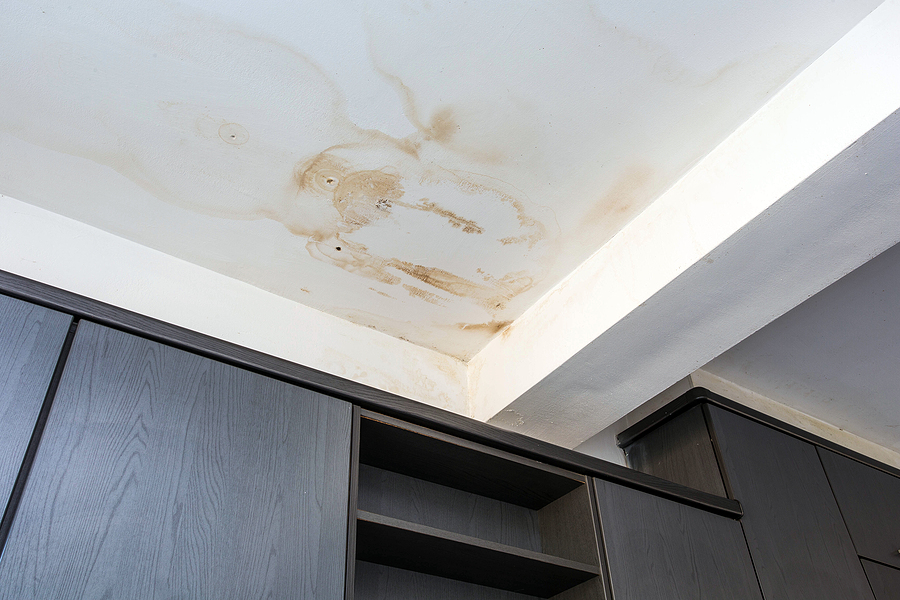A house is more than four walls and a roof. A refuge where memories and lives are fashioned. However, like any structure, dwellings can be damaged. Water damage is particularly pernicious due to its ability to weaken a structure’s integrity and its subtle character. Well, buckled ceiling from water damage are a common sign of water damage that homeowners typically overlook.
Ceiling ‘ buckling’ sounds dramatic, but it’s when plaster or drywall warps or sags. This condition degrades your home’s appearance and indicates structural difficulties. You must realize that a ceiling ripple, droop, or unevenness is more than just cosmetic.
The Science Behind Sag
To understand a buckled ceiling, let’s look at the science. Most homes have plaster or drywall ceilings. These porous materials absorb moisture easily. These materials swell when exposed to moisture from a leaking roof, an overflowing bathroom, or other sources. Weight increases with water absorption, causing sagging or buckling.
Moisture can also damage ceiling joists and beams. Wood expands when wet. It shrinks when dry. The continual expansion and contraction might weaken the timber, preventing it from supporting the ceiling.
Health Risks Beyond the Physical
Water damage can buckle a ceiling, posing structural and health risks. Mold and mildew thrive in damp places. Water on your ceiling creates the ideal setting for these mushrooms. Mold exposure, especially over time, can cause respiratory troubles, allergic reactions, and mental health issues, including depression.
Also, wetness attracts pests. Silverfish, cockroaches, and termites prefer dampness. Thus, a water-damaged ceiling might attract these unwanted guests, increasing the health dangers of buckling ceilings.
What Can You Do?
Do not delay if you notice a buckled ceiling in your home. The first step is finding the moisture source. A leaky roof, damaged pipe, or other water intrusion could cause this. This source must be addressed promptly to prevent future damage.
After removing the moisture source, inspect the damage. If the buckling is modest and hasn’t compromised the ceiling’s structure, it may be able to fix the part without replacing it. This usually involves removing the damaged pieces, drying the area, and fixing with new plaster or drywall.
If the damage is extensive or the mold is widespread, the ceiling may need to be replaced. This may seem difficult, but it’s more than simply looks. A highly damaged ceiling may collapse, causing injuries.
In the meantime…
There are ways to reduce harm while you fix the main issue. Tarps or other waterproof coverings can temporarily cover a leaky roof where water is coming in. Dehumidifiers minimize room moisture, reducing mold and mildew growth.
Also, avoid spending too much time in a room with apparent mold development and ensure appropriate ventilation. Mold spores move through the air, so avoid exposure until the problem is resolved.
Moisture, materials, and dwellings dance delicately. Water is essential to our existence, but it may destroy our homes. Buckled ceilings indicate water damage and require immediate treatment. Fixing it quickly protects your home’s beauty and your family’s health.
Hidden Enemy: Moisture
If water damage can have such serious consequences, why do homeowners often miss its early signs? The secretive character of water is the explanation. Whether it’s a tiny roof crack, window seal gap, or pipe hairline fracture, moisture finds its way in. Once within, it spreads stealthily, providing little symptoms we miss daily.
Ceilings, especially, are rarely examined. Ceilings, unlike walls with our favorite paintings or family photos or floors we walk on and maintain, are often ‘out of sight, out of mind’. Ceilings’ intrinsic nature and water damage’s covert growth make buckling typically go undiscovered until it’s severe.
Fundamental Economics: Neglect Cost
Delaying detecting and fixing a buckled ceiling is dangerous and costly. When caught early, small leaks are cheap to remedy. As water seeps in, the damage grows. What started as a patch job can become a ceiling replacement, mold cleanup, or structural repairs.
Other economic effects exist beyond repair expenses. A home with evident water damage may lose value. Buyers worried about mold and structural damage may be hesitant to buy or demand big price reductions.
Environmental Issues: Sustainability
Water damage affects more than just the home in today’s environmentally conscious society. Construction trash, a major landfill component, comes from repairs and replacements. Repeatedly fixing faults strains raw material supplies.
Without treatment, mold and mildew can impair indoor air quality. This may force homeowners to use more air purifiers and air conditioning, wasting energy.
Use Knowledge to Empower Homeowners
Water damage prevention requires proactiveness. Normal home inspections, especially after storms or severe rain, are beneficial. Understanding the usual suspects of water intrusion helps homeowners spot possible issues. This involves regularly evaluating roofs for missing or worn shingles, pipelines for wear, and external grading to move water away from the foundation.
Adopting technology might also be crucial. Current smart home gadgets may detect moisture or water leaks. Installing such instruments can protect households by alerting them to potential issues.
The Social View: The Bigger Picture
While water damage affects individual dwellings, there’s a larger perspective. In neighborhoods with frequent water damage, property prices can drop. Communities need skilled contractors, mold remediation resources, and community-driven infrastructure and drainage improvements to tackle water damage.
Water gives life. It may be a silent destroyer when it gets into places it shouldn’t. The effects of a buckled ceiling extend beyond structural damage to health, economy, environment, and society. Awareness of this story is the first step to proactive prevention and timely action.
